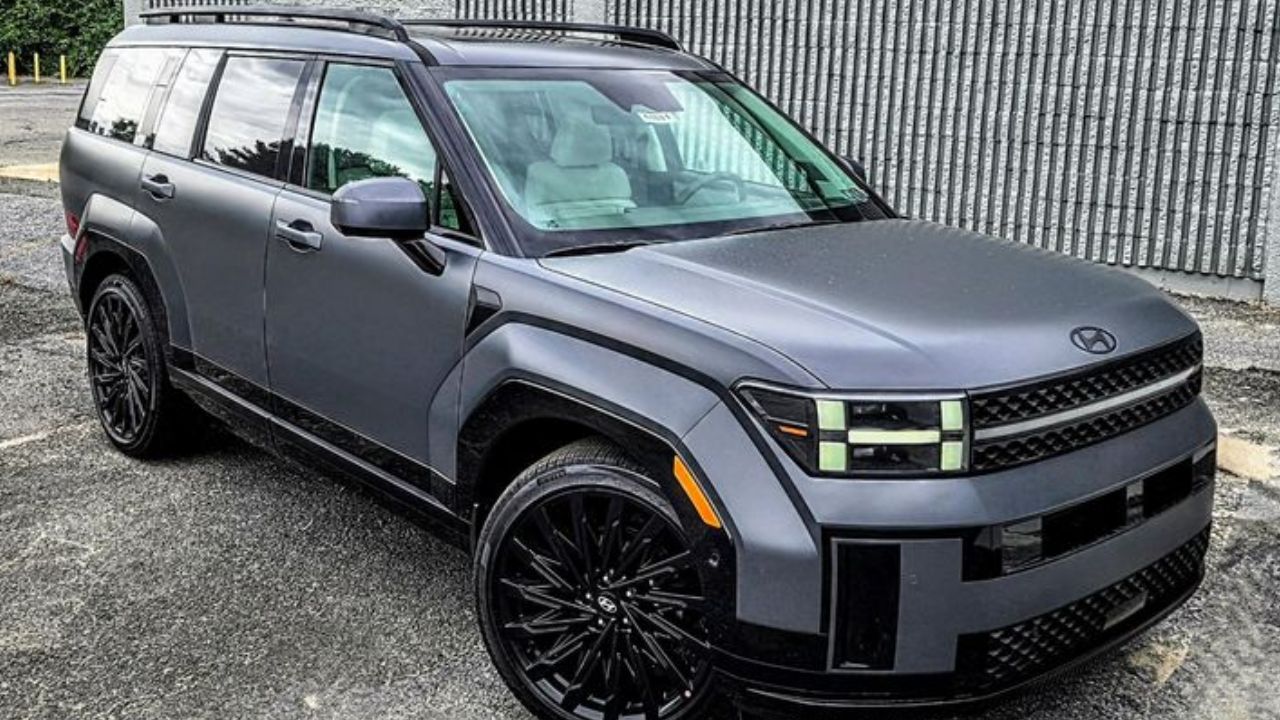If you’ve been considering a Hyundai Santa Fe or Santa Cruz but held back because of transmission concerns, your patience might finally pay off. Hyundai just announced they’re ditching the problematic dual-clutch transmission that’s been giving drivers headaches for years.
What’s Actually Changing?
Starting with the 2026 model year, both the Santa Fe and Santa Cruz will get a traditional automatic transmission instead of the current eight-speed dual-clutch system. This change affects all models equipped with Hyundai’s turbocharged 2.5-liter engine.
Think of it like switching from a complicated smartphone that constantly crashes to a reliable one that just works. The dual-clutch transmission was supposed to offer better fuel economy and quicker shifts, but in reality, it created more problems than solutions.
Why This Matters to Real Drivers
Let’s be honest – most people don’t care about the technical details of transmissions. What they care about is whether their car drives smoothly when they’re picking up kids from school or merging onto the highway. The current system has been anything but smooth.
The daily driving experience with the existing transmission often includes:
- Jerky movements during slow-speed driving
- Hesitation when accelerating from stops
- Unpredictable behavior in parking lots
- Clunky shifts that make passengers uncomfortable
The Repair Nightmare
Beyond the poor driving experience, owners have faced costly warranty repairs. When these transmissions fail, they typically need complete replacement – not just a simple fix. This means:
- Weeks without your vehicle
- Dealing with parts shortages
- Multiple trips to the dealership
- Frustration with a car you thought would be reliable
What Makes Traditional Automatics Better?
You might wonder why going “backward” to a traditional automatic transmission is actually progress. Here’s the thing – sometimes newer isn’t better, especially when it creates problems for everyday drivers.
Traditional automatics have decades of refinement behind them. They’re predictable, smooth, and mechanics know how to work on them. When you press the gas pedal, the car responds the way you expect it to.
Real-World Benefits You’ll Notice
Smoother daily commutes: No more wondering if your car will hesitate when the light turns green. Traditional automatics provide consistent, predictable acceleration that feels natural.
Better low-speed maneuverability: Whether you’re navigating tight parking spots or creeping through heavy traffic, a conventional transmission handles these situations with the smoothness you expect from a family vehicle.
Reduced maintenance anxiety: You won’t spend time wondering if today’s the day your transmission decides to act up. Traditional automatics are time-tested and reliable.
Which Models Are Affected?
This change specifically impacts Santa Fe and Santa Cruz models with the turbocharged 2.5-liter engine. If you’re looking at the hybrid Santa Fe, you’re already getting a different six-speed automatic that doesn’t have these issues.
The base Santa Cruz with the naturally aspirated 2.5-liter engine already comes with a traditional automatic, so those models continue unchanged.
What About Kia?
Interestingly, Kia – Hyundai’s sister company – isn’t making the same change. They’re sticking with their dual-clutch systems for now. This shows that even though the companies share many parts and platforms, they’re making independent decisions based on their own customer feedback and warranty data.
Why Now?
Hyundai officially says the traditional automatic transmission became available in their development cycle and provides better overall drivability. Reading between the lines, the warranty costs and customer complaints likely played a major role in this decision.
Car companies don’t typically abandon new technology unless there’s a compelling reason. The fact that Hyundai is making this change suggests they prioritize customer satisfaction over marketing claims about advanced technology.
What This Says About Hyundai
This move actually reflects well on Hyundai as a company. They could have stubbornly stuck with the problematic system, but instead, they listened to customer feedback and made a change that improves the ownership experience.
Should You Wait for the 2026 Models?
If you’re in the market for a Santa Fe or Santa Cruz, this news might influence your timing. The 2026 models with the new transmission should provide a significantly better driving experience, especially for daily commuting and family use.
However, if you need a vehicle now, the hybrid Santa Fe already offers smooth transmission performance, and the base Santa Cruz doesn’t have the dual-clutch system.
The Bottom Line for Families
For families considering these vehicles, this transmission change removes a major concern. The Santa Fe offers three-row seating, good cargo space, and distinctive styling. The Santa Cruz provides unique truck-like utility in a more manageable size. With the transmission issues resolved, both become much more compelling choices.
This change represents Hyundai putting customer experience first, which is exactly what families need when choosing a vehicle they’ll depend on for years to come.
Frequently Asked Questions
Q: Will the new automatic transmission affect fuel economy? A: While dual-clutch transmissions can theoretically offer better fuel economy, the real-world difference is often minimal. Traditional automatics have improved significantly in recent years, and the reliability benefits likely outweigh any small fuel economy difference.
Q: What happens to current owners with dual-clutch transmission problems? A: Existing warranty coverage continues for current owners. If you’re experiencing issues, contact your Hyundai dealer about warranty repairs. This change doesn’t affect existing warranty obligations.
Q: Will this make the 2026 Santa Fe and Santa Cruz more expensive? A: Hyundai hasn’t announced pricing for 2026 models yet. Traditional automatic transmissions are typically less expensive to manufacture than dual-clutch systems, so prices could remain stable or potentially decrease slightly.
